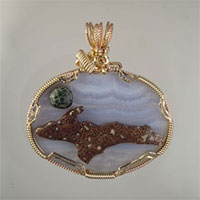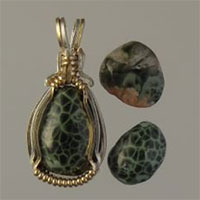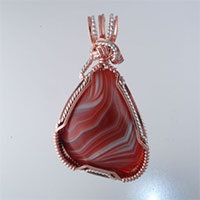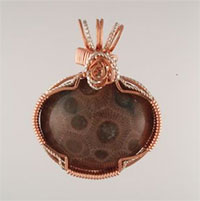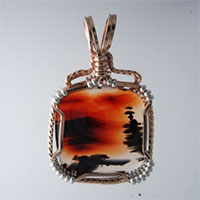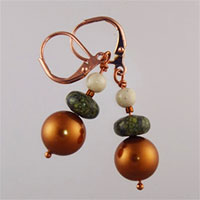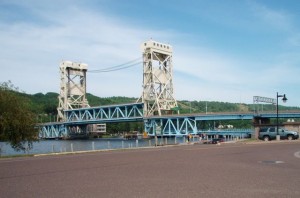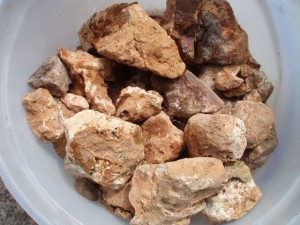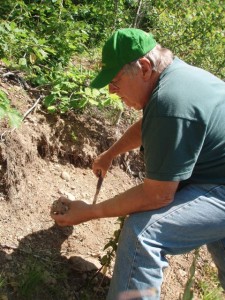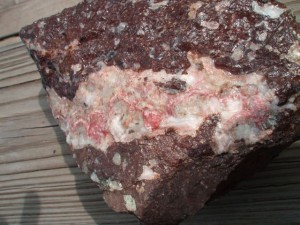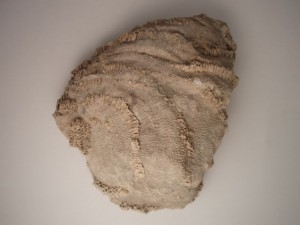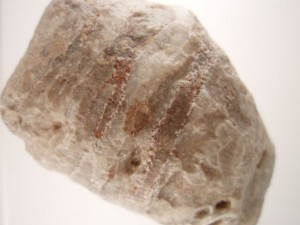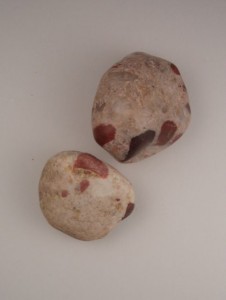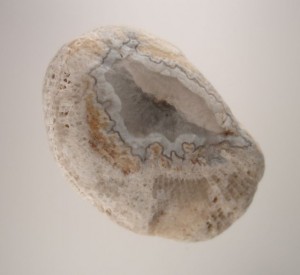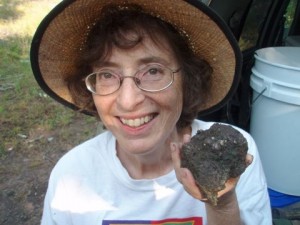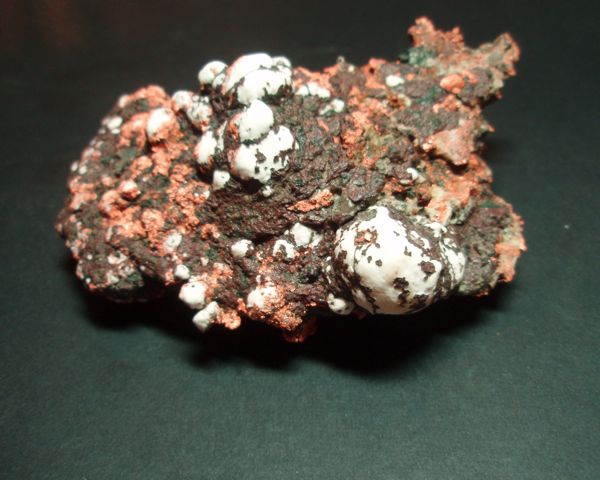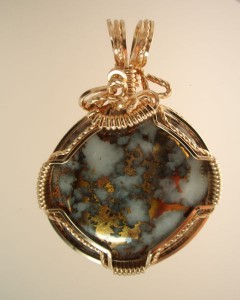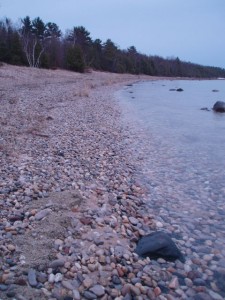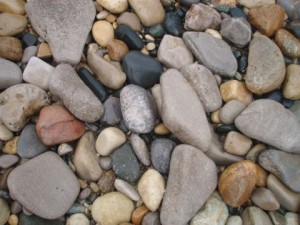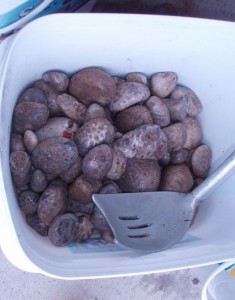Most rockhounds flock to Michigan’s Keweenaw Peninsula to find copper, but there are many other rocks and minerals that are much more rare. Any rocks and minerals that were not native silver or native copper were thought of as “Trash” and ended up on the mine rubble piles. Today we are aware of these rare treasures and dig through these old piles to find them. Unfortunately many of the spoils piles have been hauled away for fill or crushed and put under roads. Just imagine the treasures that could be found under the pavements in the Keweenaw!
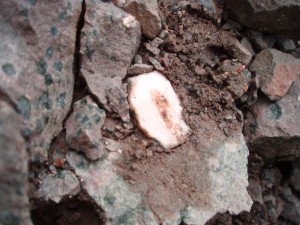
I found this one inch beauty within minutes of sitting down to dig. I just had to pluck it out with my fingers.
The current hottest gemstones in the U.P. are copper-included agates. Copper has replaced some of the banding in these agates. They are generally pink and often include green. These agates are found only in a few of the mine spoil piles here in the Keweenaw, and I do not know of any other place in the world where you can get them. They generally sell at premium prices (if you can find them). Some of these agates do not include copper, but are rare none-the-less just because they are associated with the copper mines.
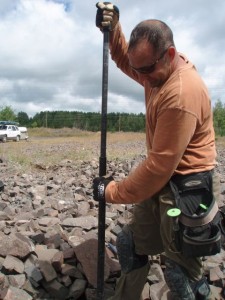
Chris "slams" a rock containing agates.
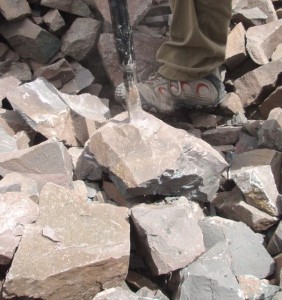
The business end of Chris' slammer.
There are two ways you might find these rare beauties. One is finding a “floater”, or an agate nodule that has broken free of any matrix. On a huge pile of rock, you could wish for a better strategy. The second way to find these agates is to find a rock with nodules and break the rock open to expose the usually small agates. The agates can be easily fractured, so care and a lot of finesse are required to extract them. Yes, they do show up on a sensitive metal detector.
My friend Chris has a custom built “slammer” that has a chisel on the end and virtually “slams” the rock apart. However, most of us break the rock with a heavy hammer and a strong arm. One rock I found and Chris broke open contained several copper agates, but it took some time and effort to get them out. A couple agates were sacrificed in the extraction, and Chris somehow bisected one agate perfectly in half.
Those that know (me) know that if I cannot make a piece of jewelry from a rock, I probably don’t need it. I am not a specimen collector, but I sometimes find specimens, and usually keep them for barter. I found a few “traders” already and look forward to a few more as the week goes on. I think that another Copper included agate hunt may happen tomorrow. I really had fun today.
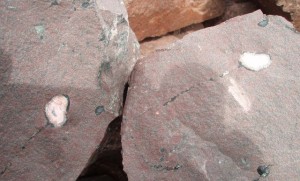
Two perfect agate halves.
They used to have convicts break rock as punishment, and we were out there doing it for fun. But we did get to leave at our choice, just about lunchtime! Smashing with the crack hammer is serious work, and Bonnie’s arm is still sore. I think IF I can keep her hammering for a few more days, perhaps her arm muscles will strengthen (good luck with that, Don).
By the way, Chris found the largest agate today, but Bonnie was a close second.


